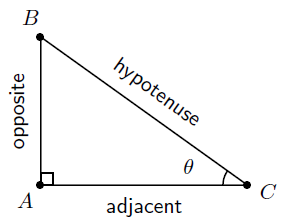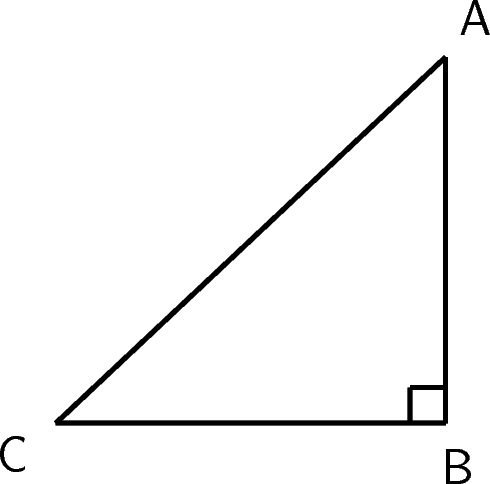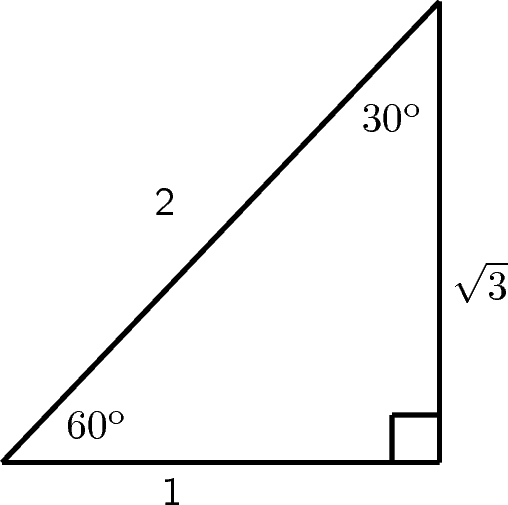| << Chapter < Page | Chapter >> Page > |
We are familiar with a function of the form where is the function and is the argument. Examples are:
The basis of trigonometry are the trigonometric functions . There are three basic trigonometric functions:
These are abbreviated to:
These functions can be defined from a right-angled triangle , a triangle where one internal angle is 90 .
Consider a right-angled triangle.

In the right-angled triangle, we refer to the lengths of the three sides according to how they are placed in relation to the angle . The side opposite to the right angle is labeled the hypotenuse , the side opposite is labeled opposite , the side next to is labeled adjacent . Note that the choice of non-90 degree internal angle is arbitrary. You can choose either internal angle and then define the adjacent and opposite sides accordingly. However, the hypotenuse remains the same regardless of which internal angle you are referring to (because it is ALWAYS opposite the right angle and ALWAYS the longest side).
We define the trigonometric functions, also known as trigonometric identities, as:
These functions relate the lengths of the sides of a right-angled triangle to its interior angles.
One way of remembering the definitions is to use the following mnemonic that is perhaps easier to remember:
| S illy O ld H ens | |
| C ackle A nd H owl | |
| T ill O ld A ge |
You may also hear people saying Soh Cah Toa. This is just another way to remember the trig functions.




For most angles , it is very difficult to calculate the values of , and . One usually needs to use a calculator to do so. However, we saw in the above Activity that we could work these values out for some special angles. Some of these angles are listed in the table below, along with the values of the trigonometric functions at these angles. Remember that the lengths of the sides of a right angled triangle must obey Pythagoras' theorem. The square of the hypotenuse (side opposite the 90 degree angle) equals the sum of the squares of the two other sides.

Notification Switch
Would you like to follow the 'Siyavula textbooks: grade 10 maths [caps]' conversation and receive update notifications?